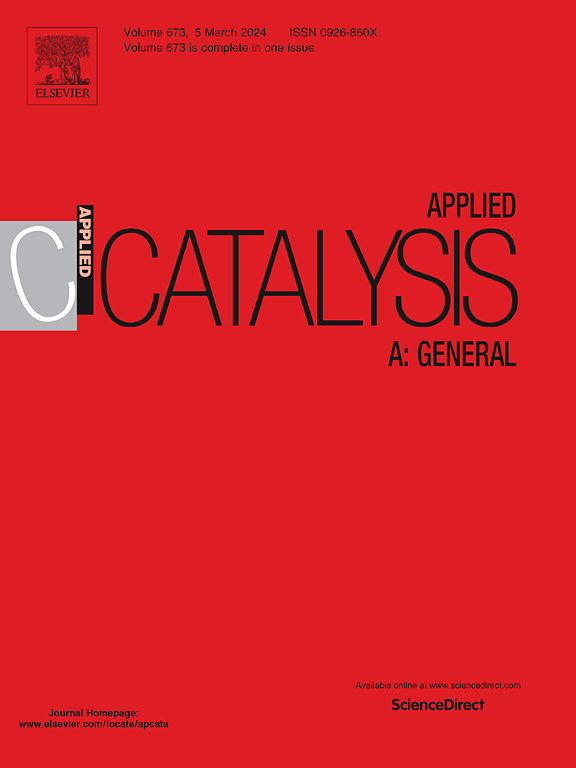Synergical effects of Nb and SiO2 on enhanced NO elimination and sulfur resistance of Fe2O3-SCR catalyst
IF 4.7
2区 化学
Q2 CHEMISTRY, PHYSICAL
引用次数: 0
Abstract
The widespread application of Fe-based denitrification catalysts is limited by its unsatisfying low-temperature NO conversion and poor anti-SO2 ability. In this study, by virtue of FeSi composite oxide with large specific surface area as support and NbOx species was used for surface modification to further regulate their acidity and redox properties, significantly improving their NH3-SCR activity. The optimal Nb/FeSi catalyst exhibited over 90 % NO conversion at 250–400 °C and displayed excellent SO2 resistance at 225 °C. The characterization results revealed that Si doping induced an amorphous structure in the FeSi composite and facilitated the formation of distinctive Fe-O–Si bonding configurations. These structural features endowed the Nb/FeSi catalyst with both an enlarged specific surface area and increased Brønsted acid sites, facilitating the dispersion of active components and the activation of NH3 species. Nb could promote the generation of more oxygen vacancies and abundant Brønsted acid sites while inhibits the adsorption of NOx and SO2. Further mechanistic studies revealed that the enhanced Eley-Rideal (E-R) mechanism, where gaseous NO directly reacts with adsorbed NH₃, significantly promoted the NH₃-SCR efficiency of Nb/FeSi. This work provides experimental guidance to improve the activity and sulfur resistance of denitration catalyst by active component control.
Nb和SiO2对Fe2O3-SCR催化剂去除NO和抗硫性能的协同作用
铁基脱硝催化剂的低温NO转化效果不理想,抗so2能力差,限制了其广泛应用。本研究利用具有大比表面积的FeSi复合氧化物作为载体,利用NbOx物质对其进行表面改性,进一步调节其酸性和氧化还原性能,显著提高其NH3-SCR活性。最佳的Nb/FeSi催化剂在250 ~ 400 °C温度下的NO转化率超过90 %,在225 °C温度下表现出优异的SO2抗性。表征结果表明,Si掺杂诱导了FeSi复合材料的非晶结构,并促进了独特的Fe-O-Si键构型的形成。这些结构特征使得Nb/FeSi催化剂具有较大的比表面积和增加的Brønsted酸位,有利于活性组分的分散和NH3的活化。Nb可以促进氧空位的生成和丰富的Brønsted酸位,抑制NOx和SO2的吸附。进一步的机理研究表明,增强的elei - rideal (E-R)机制,气态NO与吸附的NH₃直接反应,显著提高了Nb/FeSi的NH₃-SCR效率。本研究为通过控制活性组分来提高脱硝催化剂的活性和抗硫性能提供了实验指导。
本文章由计算机程序翻译,如有差异,请以英文原文为准。
求助全文
约1分钟内获得全文
求助全文
来源期刊

Applied Catalysis A: General
化学-环境科学
CiteScore
9.00
自引率
5.50%
发文量
415
审稿时长
24 days
期刊介绍:
Applied Catalysis A: General publishes original papers on all aspects of catalysis of basic and practical interest to chemical scientists in both industrial and academic fields, with an emphasis onnew understanding of catalysts and catalytic reactions, new catalytic materials, new techniques, and new processes, especially those that have potential practical implications.
Papers that report results of a thorough study or optimization of systems or processes that are well understood, widely studied, or minor variations of known ones are discouraged. Authors should include statements in a separate section "Justification for Publication" of how the manuscript fits the scope of the journal in the cover letter to the editors. Submissions without such justification will be rejected without review.
 求助内容:
求助内容: 应助结果提醒方式:
应助结果提醒方式:


